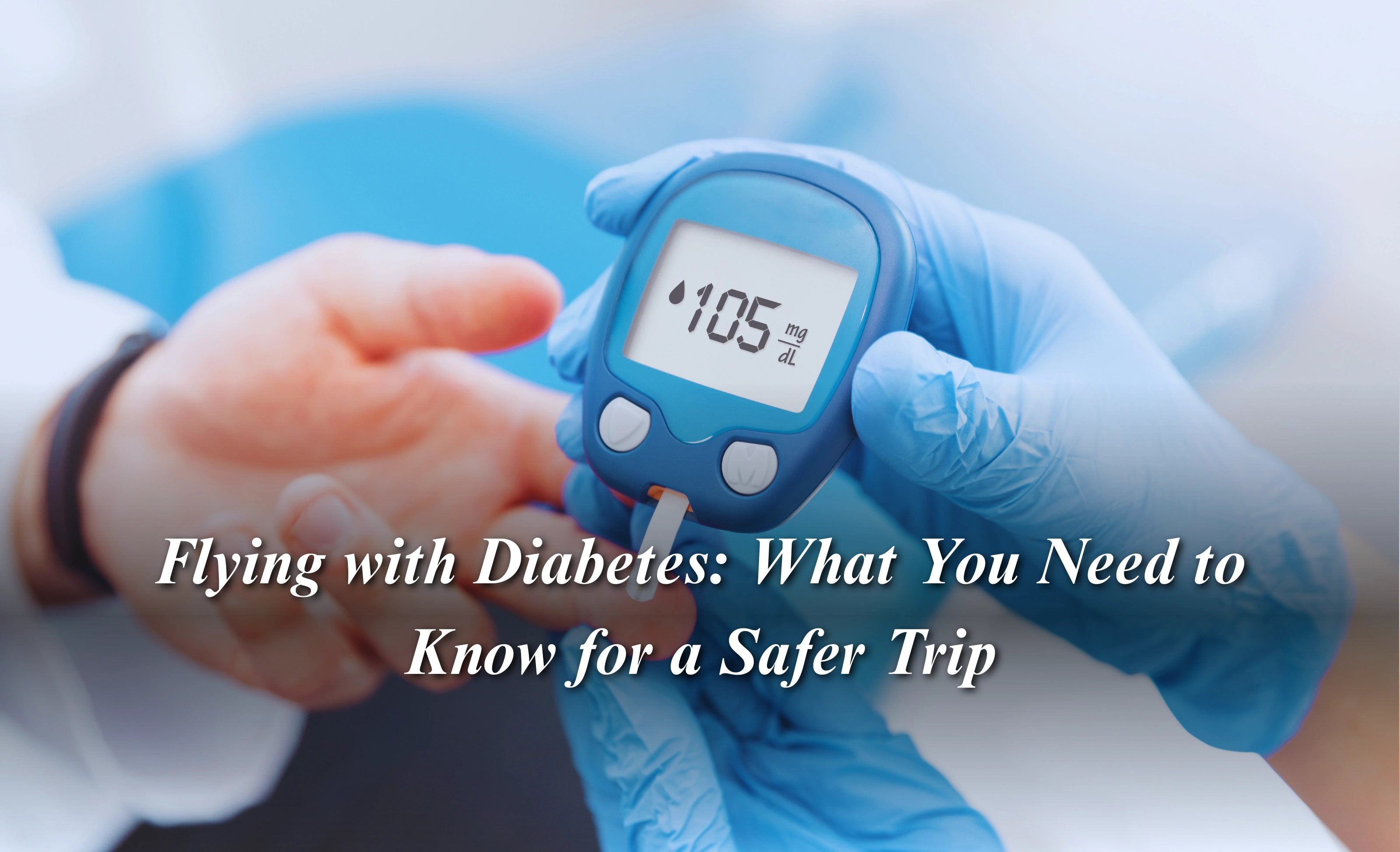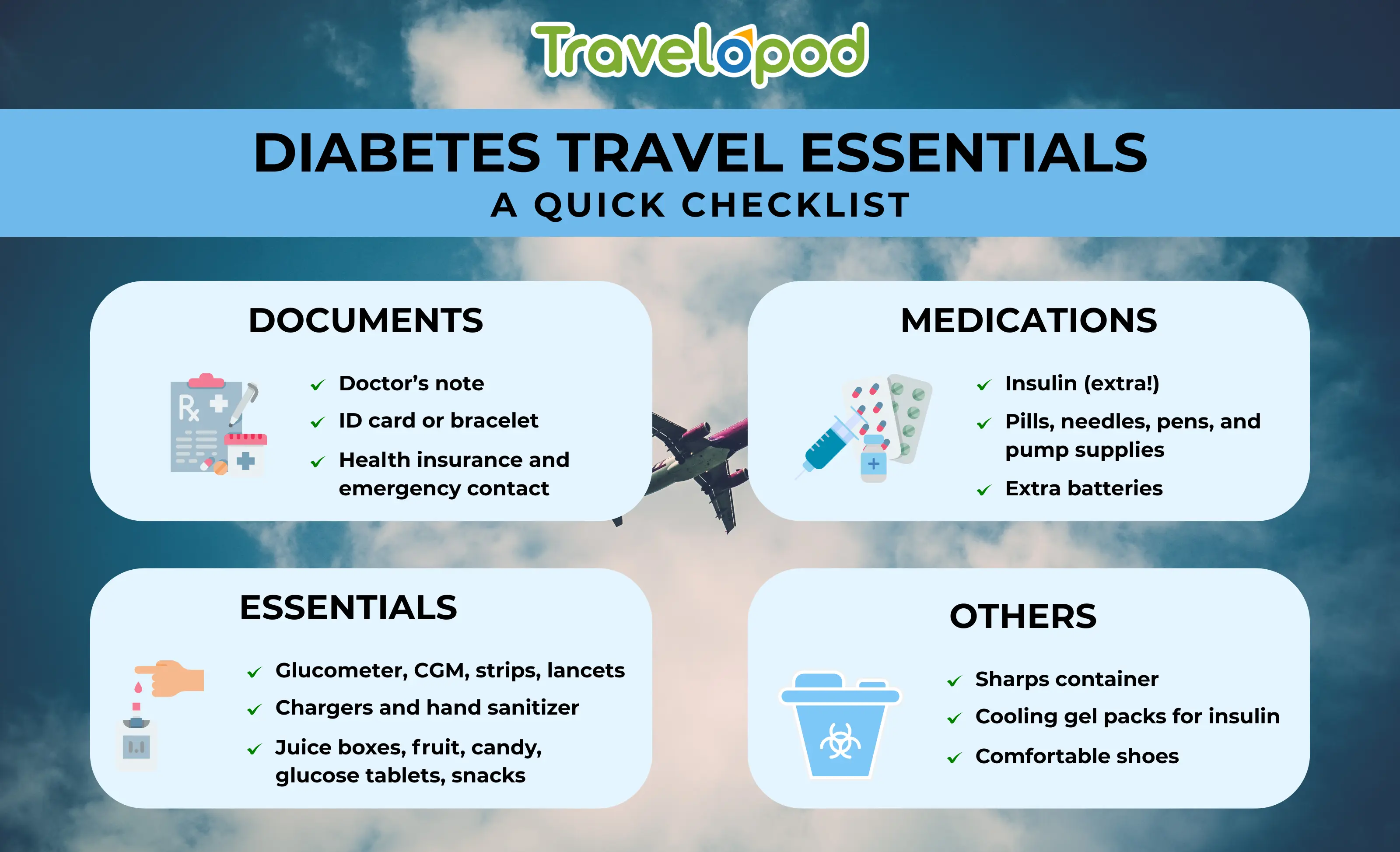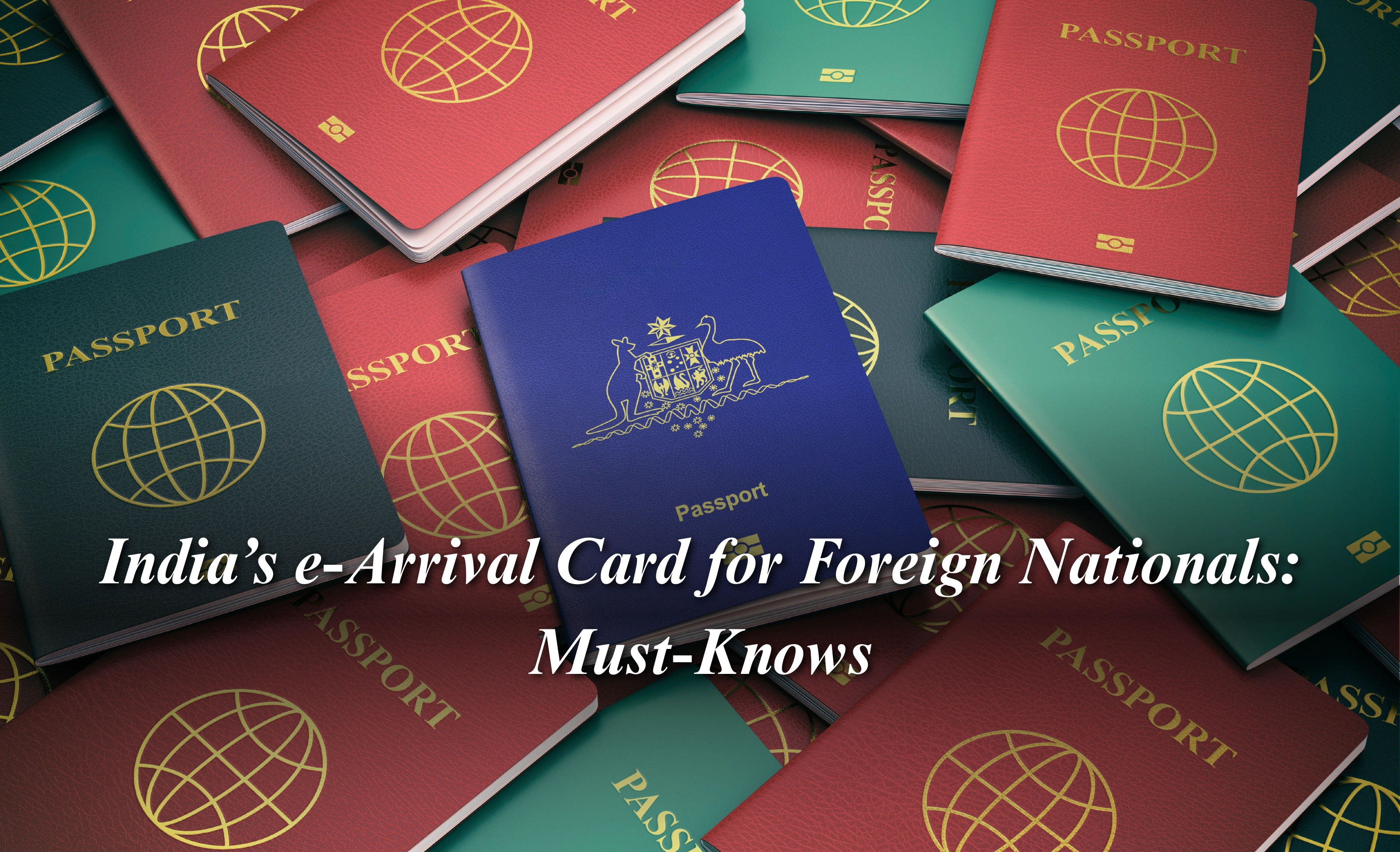Flying with Diabetes: What You Need to Know for a Safer Trip
by Travelopod
September 24, 2025

Visiting new places opens doors to exploring different cultures and creating lasting memories along the way. But the idea of flying with diabetes can make a traveling soul hesitant to welcome these new opportunities.
However, every traveler should know that a little extra planning can make all these dreams accessible. With the right steps, air travel can be smooth, safe, and even fun.
If you're a diabetic and worried about things like medicine quantities or TSA checks, we’ve got you covered. We'll walk you through everything you need to know—before, during, and after your flight.
Why Flying with Diabetes Is Easier Than Ever
Why Flying with Diabetes Is Easier Than Ever
Airports and airlines are becoming more accommodating. Here’s some good news if you’re traveling with diabetes:
- No stress about supplies: TSA allows carrying insulin, syringes, glucose tablets, and even liquids over 3.4 oz. Just pack your diabetes supplies in your carry-on, label them clearly, and you’re all set to fly worry-free.
- Keep your devices on: You can keep your insulin pump and CGM on during security checks and the flight. You do not need to remove or disconnect them. Inform the officer beforehand to avoid complications.
- Trained staff onboard: Flight crews are trained to handle medical emergencies, including diabetes-related ones. Most airlines also carry basic medical supplies, so help is always nearby if you need it.
Pre-Flight Prep: Get Ready the Right Way
Pre-Flight Prep: Get Ready the Right Way
Here’s your simple checklist before heading to the airport:
- Talk to your doctor: Share your travel plans with your doctor before your trip. If you're crossing time zones, ask about adjusting your insulin schedule.
- Pack smart: Keep all your medicines and testing supplies in your carry-on. Bring extra medicines just in case of delays or lost luggage.
- Label everything: You can keep your medicines in their original packaging. Also, carry the prescriptions from your doctor to avoid confusion during security checks.
- Doctor’s note: Carry a doctor’s note that explains your condition and lists your medications and devices. It will make security checks smoother and answer any questions that may come up.
- Know the local clinics: Note down the nearest hospital or pharmacy near where you’re staying, especially if you’re traveling internationally. This small information could play a major role in case of emergencies
Getting Through Security Without a Delay
Getting Through Security Without a Delay
TSA rules make flying with diabetes easier, but it’s still good to be prepared:
- Tell the officer: Inform the TSA officer about your medical condition before the screening begins.
- Show your documentation: A TSA Notification Card or a letter from your doctor can make the process much smoother.
- Don’t remove your pump or CGM: You can request a hand inspection instead of letting devices go through X-rays.
- Ask for privacy: If you’re not comfortable with public screening, you can ask for a private room.
- Call TSA Cares (72 hours before): TSA offers extra help for travelers with medical needs.
In-Flight: Stay Safe, Stay Comfortable
In-Flight: Stay Safe, Stay Comfortable
Once onboard, a few simple habits can keep you well:
- Arrive early: Try to avoid situations where you need to rush, whether at security or for boarding. Arrive at the airport at least 3 hours before departure to complete all the checks.
- Keep supplies close: Your medicines, snacks, and check-up meters should stay in proximity. It will be easier for you to bring them out of your carry-ons when needed.
- Hydrate often: Water helps in regulating sugar levels. It is best you avoid sugary drinks and drink water at regular intervals.
- Move around: Sitting idle for long hours can lead to Deep Vein Thrombosis (DVT) formation of blood clots in deep veins. While space on an aircraft may be limited, you can still walk along the aisle or do simple stretching exercises while seated.
- Snack smart: Pack nuts, fruit, granola bars, or peanut butter. In case meals are delayed or off-schedule, these will keep your sugar stable.
Eating Well While Traveling
Eating Well While Traveling
Trying new foods is part of the fun—but keep your health in mind:
- Choose balanced meals: Go for lean protein, veggies, fruits, and whole grains. Limit sugary or high-carb dishes.
- Identify your carbs: Check your meals for sugar intake. Sauces, breads, or desserts can spike your sugar in no time.
- Space out meals: Skipping meals or overeating at a buffet is not recommended. You can pre-check with your doctor for meal preferences.
Special Tips for Long Flights (Like from the US to India)
Special Tips for Long Flights (Like from the US to India)
Traveling from the U.S. to India? These tips will help:
- Adjust insulin timing: If you are crossing time zones, be aware that your schedule will change along with it. Set phone alarms or reminders accordingly.
- Request special meals: Check with airlines if diabetes-friendly meals are available in-flight. Book them in advance if available.
- Wear comfy shoes and socks: If you are on a flight that will last more than 10 hours, opt for comfy shoes and socks.
- Avoid injecting air into insulin vials: Cabin pressure can affect insulin vials. Be gentle when drawing insulin.
- Compression socks help: Compression socks reduce travel fatigue by improving blood flow and preventing blood clot issues such as Deep Vein Thrombosis (DVT) due to long hours of sitting.
After You Land: Stay On Track
After You Land: Stay On Track
Although your vacation doesn't mean to take a break from care, you can keep these pointers in mind:
- Test often: Testing helps you keep your sugar levels in check. The best method is to check before meals, before bed, and anytime you feel “off.”
- Watch your feet: People with diabetes heal more slowly than expected, so even small cuts require attention. If you walk a lot, check your feet daily for cuts, blisters, or swelling. Try to wear shoes at all times (inside or outside).
- Keep an eye on the weather: Hot weather will lead to dehydration, which directly affects blood sugar control. On the other hand, cold weather could raise blood sugar levels, as the body becomes less active and stress hormones increase.
- Talk to your travel buddy: If you are traveling along with someone or in a group, it's best to let them know your situation. You will have a reliable hand in case of emergencies.
Traveling with Type 1 and Type 2 Diabetes
Traveling with Type 1 and Type 2 Diabetes
Knowing your type helps you prepare better:
Type 1 Diabetes
Type 1 Diabetes
In type 1 diabetes, the body doesn’t make insulin. The patient is likely to use an insulin pump on multiple daily injections. They are more prone to sudden lows (hypoglycemia) during long travel days or skipped meals.
How to Handle:
How to Handle:
- Plan insulin doses carefully, especially when crossing time zones.
- Monitor your levels more frequently and always carry quick sugar sources like glucose tablets.
Type 2 Diabetes
Type 2 Diabetes
In type 2 diabetes, the body of the patient does make insulin, but is not able to use it efficiently. These patients rely more on pills, diet changes, or insulin. Sitting for long hours or eating high-carb snacks can raise sugar levels.
How to Handle:
How to Handle:
- Focus on healthy eating, walking, and medication timing.
- Less urgent adjustments, but still important to stay on schedule.
Bottom Line: Both types can travel safely—just adapt your care based on your needs.
Diabetes Travel Essentials: A Quick Checklist
Diabetes Travel Essentials: A Quick Checklist

Frequently Asked Questions
Frequently Asked Questions
How Can I Get a TSA Medical Card?
How Can I Get a TSA Medical Card?
You can download the TSA Medical Notification Card from their official website. Just print it, write your name and condition, and show it to the officer during screening. It’s not required, but it makes things quicker and easier.
Can I Travel with Type 2 Diabetes?
Can I Travel with Type 2 Diabetes?
Yes, you can! With a little planning—like packing your meds, staying active, and eating on time—traveling with Type 2 diabetes is safe and manageable.
Is Travel Insurance Necessary for Diabetic Travelers?
Is Travel Insurance Necessary for Diabetic Travelers?
Yes, it’s highly recommended. Travel insurance helps in emergencies, covers lost meds, and supports you if you need care abroad. Look for plans that cover pre-existing conditions.
Can I Carry Insulin in My Hand Luggage?
Can I Carry Insulin in My Hand Luggage?
Yes, insulin and diabetes supplies are allowed in your carry-on. Keep them in original packaging and use gel packs to keep insulin cool. Always carry a prescription, just in case.
Are There Any Medical Restrictions at the Airport?
Are There Any Medical Restrictions at the Airport?
Not really, but you should inform TSA about your supplies. Larger liquid items for medical use are allowed if declared. Some countries may ask for a doctor’s note, so keep it handy.
Final Thoughts
Flying with diabetes doesn’t have to feel overwhelming. With a little planning and awareness, you can explore the world, try new foods, and make unforgettable memories—while keeping your health in check.
So pack that bag, double-check your checklist, and take off with confidence. You’ve got this.
Safe travels and smooth landings!
Book your flights to Kochi and enjoy Kerala’s peaceful backwaters and scenic beaches. Call Travelopod at +1-929-269-8013 and save up to $300 on your flight bookings.
EXPLORE MORE



